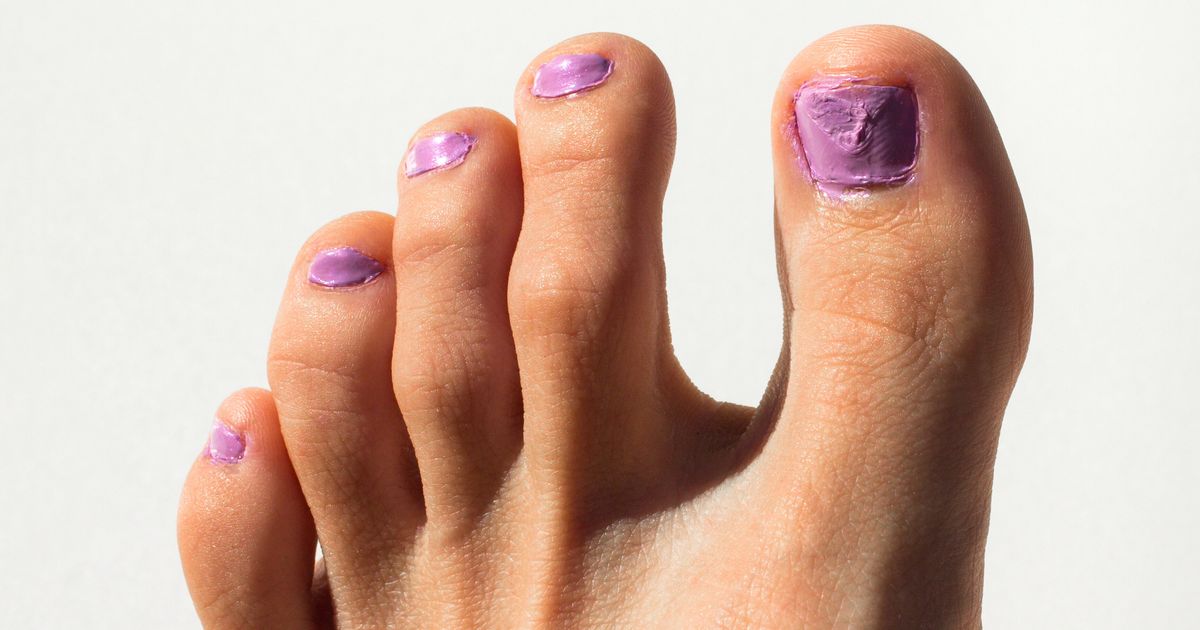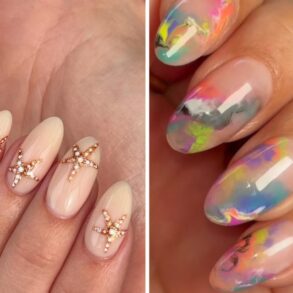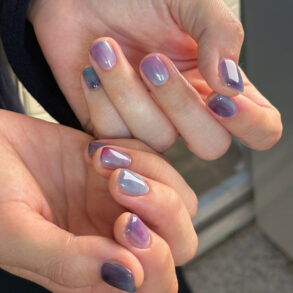
If you ask most salon customers when their nails are going to be completely dry, their answers might range from “five minutes, tops” to “tomorrow? OK wait, maybe never?” There’s a lot of confusion about when you’re actually safe to do things like walk down the street, scratch your nose or make a quick phone call. That’s because so many of us have had the awful experience of reaching into a handbag with a fresh manicure, only to come up with five smeary, miserable reasons why we can’t have nice things.
We decided to get some answers from the people who know best: professional nail artists. Here’s what they told us.
Advertisement
First: How does nail polish work, anyway?
Jin Soon Choi, founder of New York’s JINsoon Nail Spas and JINsoon Nail Lacquer Line, explained what’s going on: “Nail polish contains solvents to keep it liquid, polymers that provide the film-forming properties, pigments that are responsible for the coloUrs, and resins that enhance the adhesion of the polish to the nail surface,” she said.
“The drying process is simply a matter of having the solvents evaporate, but the evaporation begins on the outside surface of the nail polish and ends when the polish is dry through the entire cross-section of the application,” she said. “That’s why clients will touch their newly painted nails to find that they are ostensibly dry to the touch, only to ruin the application a few minutes later by hitting their fingernails on a surface or putting their shoes on too soon after getting a pedicure.”
So how long does it take for nails to dry?
Now that you know your polish is drying from the outside in, how long does it really take to dry? Experts had lots of opinions, often noting that “dry to the touch” and “dry enough to root around in the bottom of a backpack” are two completely different states of dryness.
Amy Ling Lin, the CEO and founder of New York’s Sundays Studios, explained that variable of timing this way: “Although the surface may be dry enough, the layers underneath still require a slightly longer drying time to fully set, and you just can’t skip this process. That’s why you need to avoid bumping into hard surfaces when your nails are freshly painted, and also to avoid other things that could leave an imprint on the nail, like pressing them against fabric, wearing high heels that squish your toes or even washing your hair.”
Advertisement
We’ve heard drying opinions ranging from 15 minutes to 24 hours, all with different provisos attached. Here goes:
10 to 15 minutes: “If you press down on your newly painted nails, it will always leave a mark, so allow 15 minutes before doing anything heavy-handed,” said Thea Green, founder of Nails.Inc. “Polish can seem dry to the touch after 10 to 15 minutes, but to completely dry, it’ll take about one to two hours, on average,” said nail artist Hang Nguyen.
20 minutes: Nail artist Britney Tokyo said this is the average drying time for her clients. She’s joined in this opinion by Lin: “After 20 minutes, we can say nails are ‘safe surface’ dry,’” she said. But she also had this warning: “A proper manicure or pedicure takes about six hours to fully set, so you’ll want to pay attention to what you’re doing during that time.”
30 minutes: “I have 15-minute timers at all my drying stations, but most of my clients will do two drying sessions,” Choi said. “I recommend not touching or doing anything requiring heavy use of the hands for two to three hours after getting a mani, just in case.”
A whole day: “If you’re working with regular lacquer, not fast-drying, it can take a few hours for your nails to be completely dry,” said Mazz Hanna, CEO of Nailing Hollywood, a talent agency representing nail experts. “In my personal opinion, it takes a full 24 hours for nails to be really dry, meaning you don’t have to worry about them chipping when you’re doing common tasks like digging keys out of your purse or doing dishes.”
Advertisement
How to apply polish for a faster dry.
First, make sure your nails are in a state fit to be polished. “I always make sure there isn’t any oil on my nails before polishing,” Green said.
Now it’s time to take your polish out of the fridge. Yep, that’s right. “When polish is tacky and not smooth enough, it creates a thick layer on the nails, so I recommend storing it in the fridge to cool down and go on a little smoother,” Britney Tokyo said. From there, she said, “Apply two thin layers of polish, because the thinner the layer, the shorter the dry times.”
Nguyen suggested letting each layer dry completely before applying another layer, as did Choi, who said: “Apply a base coat, then let it dry, apply a layer of coloUr and allow it to dry for two to three minutes, then apply a quick dry top coat and let it dry for another 15 or 20 minutes.”
Hacks that help, and some that don’t.
“Some nail artists recommend putting quick dry spray or oil on the nails to make the polish dry faster,” Britney Tokyo said. “But that only works on the top layer, which means polish is not dry all the way, so you still have to be careful with that.”
Choi’s opinion: “Don’t use quick dry drops immediately after the nail polish is applied, because it will make your nails take longer to dry, and because it contains oil, may even cause polish to peel off.”
Advertisement
“If I’m really tight for timing, I use my hair dryer on the coolest setting and slowest speed,” Green said. “I hold it approximately a foot away to ensure I don’t create air bubbles or smudges.” She also said that the social media hack of setting nails with hairspray is “a good little trick when you’re tight for time.”
“After top coating and letting them air dry a bit, dunk your nails in cold water to speed up the drying time,” Nguyen said. “Or put your nails under a fan to speed things up.”
This post was originally published on this site be sure to check out more of their content.







